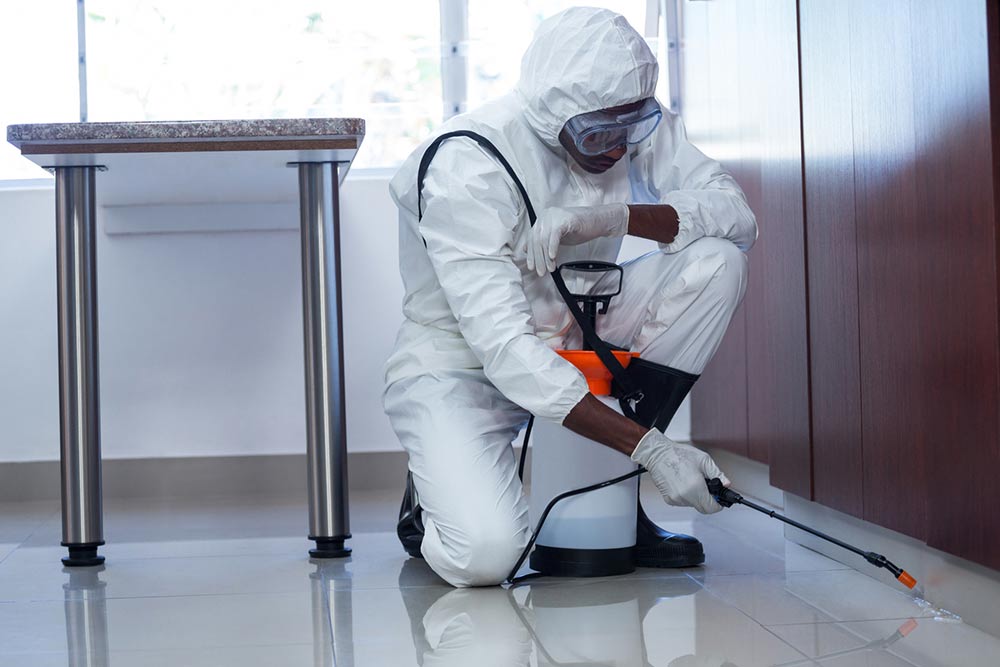11 common pest control mistakes one must avoid

Getting rid of pests is taxing but necessary for a hygienic environment. Pests like mosquitoes, rodents, and ticks can lead to infections and make the place untidy and unclean. There are many ways to control pests, from sprays and coils to traps and the use of natural products. But before one resorts to these methods, it is essential to know about a few common mistakes while using pest control and how to avoid them:
Not identifying the pests
People often buy traps, sprays, etc., without identifying the pest first. However, if one uses a pest control product meant for a different pest or insect, there is a chance that the pest will survive. One effective hack is photographing the pest or rodent and uploading it to a search engine to help identify it. Once it is clear what pest may be bothering someone, finding a way to eliminate it will become easier.
Spraying over ants
Using a spray may be helpful to eliminate mosquitoes and rodents, but it’s a different story with ants. Ants form large colonies, and not all step out simultaneously. So, spraying over the visible ants and disposing of their carcasses will not destroy the entire colony. For that, the best strategy is to buy strong bait and place it where there are many ants. These ants are bound to take the bait to the others in their colony and will destroy all the ants.
Keeping the area untidy for a long time
Insects and rodents thrive in untidy, messy places. It is not enough to dust only the surfaces – if a place isn’t deep cleaned, it can still become a breeding ground for pests. To avoid this, one should thoroughly dust and clean their home or office at least once every fortnight. To make things easier, it is ideal if a professional is appointed for this task.
Not treating pets for fleas and ticks
When fleas and ticks attack pets, these pests will likely proliferate. Also, of course, they affect the health and well-being of the pet infected by these creatures. Therefore, one should regularly get their pets checked for fleas and ticks and immediately get them treated if they have been infected. Regularly bathing and grooming one’s pet is also important to prevent flea and tick attacks.
Not sealing garbage bags
Unsealed garbage bags are open invitations to fleas, ticks, rodents, and mosquitoes, as they thrive in litter. So, one should always knot or seal the mouths of garbage bags while taking out trash. Also, when garbage bags are fastened to dustbins, they should be secured by clips, rubber bands, adhesive glue dots, etc., so they do not slip into the trash can.
Placing baits at the wrong spot
Another common mistake is to place baits at a spot where pests are infrequent. For example, placing the bait right at the center of the room may not be the best idea because pests usually stick to the nooks and corners of rooms. So, one should place these baits in dark corners, behind wardrobes and refrigerators, where they are most likely to be found.
Waiting for the pests to vacate on their own
Many believe pests will vacate their homes or offices when the weather becomes cooler and more pleasant. But once pests settle at a place, they tend to procreate and multiply and continue their stay, even when the season changes. To avoid this hassle, one should take quick action against pests instead of voluntarily waiting for them to desert the place.
Not getting pest control done
Eliminating pests through pest control once is not enough – it is a continuous process to ensure they don’t return. Therefore, it is advisable to get pest control done every three months or more frequently if the place is highly prone to pests.
Not seeking professional assistance
Many pest control companies offer practical solutions to eliminate pests at their source. Sometimes, spraying or using coils and baits may not work when there are too many pests. In such cases, one should inform a pest control company to conduct extensive pest control in a home or office to be devoid of pests for at least a few months. Also, most of these companies maintain records of when their clients’ pest control services are due, so even if one forgets to call them, they can remind their clients and ensure regular pest control.
Not reading instructions on pesticide containers
Pesticides are highly poisonous, so it is crucial to read all the instructions and directions of use printed on pesticide bottles. These bottles should always be kept from children and sprayed only on specific areas of the room. In case of any queries, one should promptly contact the county extension office before using the pesticide.
Not sealing cracks and gaps
Cracks and gaps on walls become entryways for pests and rodents, so they should be sealed immediately to prevent them from entering. Also, one should frequently check the home or office for cracks and gaps. These should ideally be filled with steel wool and caulk gun or cement, metal sheeting, etc., for larger ones.


